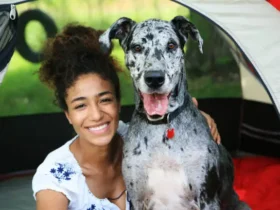Cats are often seen as aloof and independent, but understanding their happiness can strengthen your bond and ensure they lead a fulfilling life. Unlike dogs, who are usually quite expressive about their feelings, cats may require a bit more observation to gauge their contentment. Here’s a comprehensive guide to recognizing when your cat is truly happy.
1. Purring
What It Means: Purring is one of the most common signs of a happy cat. While cats can purr for various reasons, including stress or pain, a relaxed and rhythmic purr usually indicates contentment.
What to Look For: Pay attention to the context. If your cat purrs while being petted or while lying in a comfortable spot, it’s a good sign of happiness.
2. Playfulness
What It Means: A happy cat is an active cat. Playfulness is a clear indicator of a content feline. It shows that your cat is energetic and satisfied with its environment.
What to Look For: Observe your cat engaging in play with toys, chasing after objects, or even initiating playtime with you. A lack of playfulness or interest in activities might indicate boredom or other issues.
3. Relaxed Body Language
What It Means: Cats communicate a lot through their body language. A relaxed and content cat will display certain physical cues that signify happiness.
What to Look For: Look for signs such as a relaxed tail, ears in a natural position (not flattened), and a body that’s stretched out comfortably. A cat that is happy will often lie on its back, exposing its belly, which indicates trust and comfort.
4. Affectionate Behavior
What It Means: Cats that are happy will often seek out affection from their owners. They might nuzzle against you, purr while being held, or follow you around the house.
What to Look For: If your cat frequently rubs its head against you or curls up on your lap, it’s a sign of affection and contentment. Cats that avoid contact or hide from you might be experiencing stress or discomfort.
5. Healthy Eating and Drinking Habits
What It Means: A content cat will have a healthy appetite and drink water regularly. Changes in eating or drinking habits can be a sign of illness or dissatisfaction.
What to Look For: Monitor your cat’s food and water intake. If your cat is eating and drinking normally and appears satisfied after meals, it’s generally a good sign of well-being.
6. Grooming
What It Means: Regular grooming is another indicator of a happy cat. Cats groom themselves as a way to clean their fur and soothe themselves.
What to Look For: A cat that is grooming itself regularly and thoroughly is usually a sign of a content and healthy feline. However, excessive grooming or bald spots can indicate stress or medical issues.
7. Playful Tail Movements
What It Means: A happy cat often displays a tail that moves gently or flicks when they are in a good mood. It’s a way for them to express their feelings.
What to Look For: A tail held upright with a relaxed movement or a gentle flick can indicate contentment. Be cautious of a puffed-up or thrashing tail, as these can be signs of agitation or irritation.
8. Healthy Sleep Patterns
What It Means: Cats are known for their love of sleep, but a happy cat will have consistent and healthy sleep patterns.
What to Look For: If your cat sleeps in various comfortable spots, stretches out, and seems relaxed, it indicates a content state. Disrupted sleep or hiding excessively might be a sign of stress or health problems.
9. Vocalizations
What It Means: While cats are less vocal than dogs, they still communicate through meows, chirps, and trills. A happy cat might use these sounds to interact with you.
What to Look For: Pleasant and varied vocalizations can indicate that your cat is in a good mood. Excessive meowing or aggressive sounds may suggest that your cat is seeking attention or is upset.
10. Curiosity and Exploration
What It Means: A curious cat that explores its environment is usually comfortable and confident in its surroundings.
What to Look For: If your cat is exploring new areas of your home, investigating new objects, and showing interest in their environment, it’s a positive sign of a happy and engaged feline.
Conclusion
Recognizing a happy cat involves paying close attention to their behavior, body language, and daily habits. By observing these signs and ensuring that your cat’s needs are met, you can foster a positive and loving relationship with your feline friend. Remember, every cat is unique, so it’s important to get to know your own pet and understand what makes them happiest.











Leave a Reply